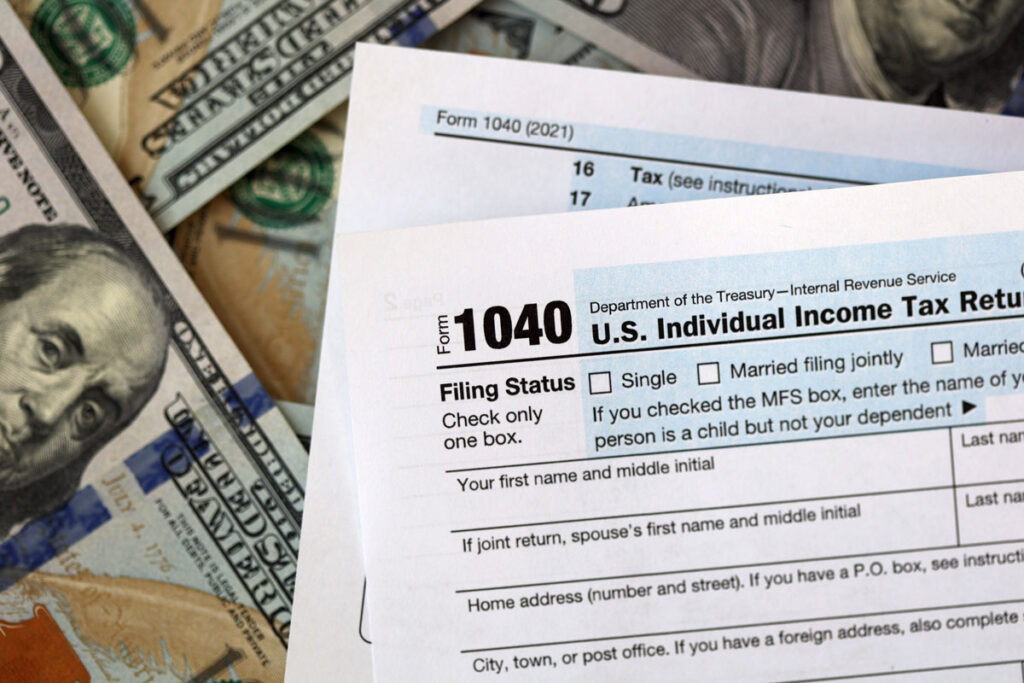Rising uncertainty, expiring tax breaks, and silent cost increases, 2025 is one of the most disruptive years yet for U.S. taxpayers. While inflation adjustments bring minor relief, looming tax law expirations could hit individuals and businesses hard in 2026. Many are unaware that the 2017 Tax Cuts and Jobs Act (TCJA) provisions are set to expire at the end of 2025, meaning their impact would primarily be felt in the 2026 tax year, potentially reversing years of planning and savings.
From shifting tax brackets and reduced credits to the return of personal exemptions, these changes can blindside even the most organized filers. Add to that complex offshore reporting, unclear congressional policies, and tightening IRS compliance, it’s no longer enough to just file taxes; you need a strategy.
That’s where Magnus Consulting steps in, offering tax planning strategies and expert advisory that ensures you stay compliant and maximize savings in this evolving landscape.
Amendments in the U.S. Tax Codes in 2025 and Their Impact
Understanding the various categories of U.S. taxation, as they apply to different entities and income streams, is a must for effective tax planning in the USA. Below is a simplified table showing how each category is affected in 2025, and what the benefits or drawbacks might be for individuals and businesses:
| Type | Description | Who It Affects | What Changed in 2025 | Benefits or Losses |
| Personal Tax Code | Governs US federal income tax, including deductions, credits, and tax brackets | Individual taxpayers, freelancers, and investors. | Inflation-adjusted new tax brackets raised income thresholds across all filing statuses | Benefit: Slight tax relief as more income is taxed at lower rates.
Loss: No major new deductions; inflation may offset the bracket increases. |
| Commercial Tax Code | Covers taxation of corporate income, business deductions, and employment taxes. | LLCs, S-corps, C-corps, partnerships. | No change in corporate tax rates. Payroll tax limits adjusted. | Benefit: Stable rates allow predictable tax planning in the USA.
Loss: Businesses must manage higher payroll taxes and stricter reporting for foreign transactions. |
| Social Tax Code | Related to Social Security, Medicare, and payroll taxes—typically deducted from wages. | Employers, employees, and gig workers. | Social Security wage base increased; Medicare thresholds remain unchanged. | Loss: Employees pay more into Social Security with no immediate gain.
Employers see increased payroll tax costs, especially for high-earning staff. |
| International/Offshore Tax Code | Focuses on foreign asset disclosures and income from overseas | U.S. persons with foreign income or businesses investing abroad. | Enhanced enforcement and compliance audits from IRS on offshore assets. | Loss: Increased compliance costs and risk of penalties.
Benefit: Those compliant may avoid audit if proactive with accounting services in the USA. |
Social Security & Medicare Changes
Tax planning in the USA requires understanding IRS payroll tax updates that impact both individuals and employers. These changes are crucial parts of income tax in the United States and affect staffing costs and take-home pay.
| Tax Type | 2024 | 2025 | Change | What it means |
| Social Security Wage Base | $168,600 | $176,100 | + $7,500 | You pay Social Security tax only up to this income level |
| Social Security Tax Rate | 12.4% | 12.4% | No change | Employer and employee each pay 6.2% |
| Medicare Tax Rate | 2.9% | 2.9% | No change | Paid by both employer and employee |
| Extra Medicare Tax (Over $200,000) | 0.9% | 0.9% | No change | Applies only to higher earners |
Retirement Plan Contribution Limits
Effective tax planning in the USA includes taking advantage of increased retirement limits. These updates help businesses improve benefits and allow individuals to reduce US federal income tax through smarter retirement contributions.
| Retirement plan | 2024 | 2025 | Change |
| 401(k) | $23,000 | $23,500 | +$500 |
| SIMPLE IRA | $16,000 | $16,500 | +$500 |
| SEP IRA | 25% of comp. up to $69,000 | 25% of comp. up to $70,000 | +$1000 cap |
| Traditional IRA | $7000 | $7000 | No change |
| Roth IRA | $7000 | $7000 | No change |
| Highly Compensated Employee Limit | $155,000 | $160,000 | +$5000 |
Roth IRA Phase-Out Ranges
As part of income tax in the United States, updated Roth IRA income thresholds affect contribution eligibility. These changes are important for individual investors focused on long-term tax planning USA strategies.
| Filing status | 2024 | 2025 | Change | Impact |
| Single | $146k–$161k | $150k–$165k | + $4,000 | More people can contribute in full or partially |
| Married Filing Jointly | $230k–$240k | $236k–$246k | + $6,000 | Expanded eligibility |
| Married Filing Separately | $0- $10,000 | $0-$10,000 | No change | Still very limited access |
HSA & FSA Contribution Limits
Health-related savings are a key element of taxation in the United States. New 2025 limits help individuals reduce taxes and allow employers to expand benefits through flexible tax planning USA.
| Plan | 2024 | 2025 | Change | Impact |
| HSA – Individual | $4,150 | $4,300 | +$150 | Save more for medical expenses tax-free |
| HSA – Family | $8,300 | $8,550 | +$250 | More room for family healthcare costs |
| HSA – Min. Deductible (Ind.) | $1,600 | $1,650 | +$50 | Required to qualify for HSA |
| HSA – Min. Deductible (Fam.) | $3,200 | $3,300 | +$100 | Required to qualify for HSA |
| HSA – Out-of-Pocket Max (Ind.) | $8,050 | $8,300 | +$250 | IRS-defined plan limit |
| HSA – Out-of-Pocket Max (Fam.) | $16,100 | $16,600 | +$500 | Higher plan cap |
| FSA Contribution Limit | $3,200 | $3,300 | +$100 | Spend on healthcare tax-free |
| FSA Carryover Limit | $640 | $660 | +$20 | Carry unused FSA funds to next year |
Standard Mileage Deduction Rate
This deduction plays a critical role in accounting services in the USA for self-employed individuals and businesses. The IRS raised the rate to reflect increased driving expenses in 2025.
| Purpose | 2024 | 2025 | Change | What it means |
| Business Travel | $0.67/mile | $0.70/mile | + $0.03 | Larger tax deduction for business-related driving |
Bonus Depreciation Phase-Out
Bonus depreciation is a key benefit under taxation in the United States for capital investments. The 2025 reduction affects how businesses write off equipment and long-term assets.
| Year | Bonus Depreciation % | Change from Prior Year |
| 2024 | 60% | ↓ from 80% in 2023 |
| 2025 | 40% | ↓ 20% vs. 2024 |
Fringe Benefits (Tax-Free Limits)
Tax-free fringe benefits are vital for compensation strategy and tax planning in the USA. These 2025 updates offer employers more flexibility while improving employee satisfaction and tax efficiency.
| Benefit | 2024 | 2025 | Change |
| Parking / Transit Pass | $315/month | $325/month | +$10 |
| High-Cost Area Per Diem | $309/day | $319/day | +$10 |
| Low-Cost Area Per Diem | $214/day | $225/day | +$11 |
Foreign Earned Income Exclusion
Americans abroad using offshore accounting in USA strategies benefit from the increased exclusion amount in 2025. It’s a crucial tool in international tax planning in the USA.
| 2024 | 2025 | Change | Use case |
| $126,500 | $130,000 | + $3,500 | Qualifying expats can exclude more income from us federal income tax |
How Magnus Can Help with Accounting Services in USA
At Magnus Consulting, we guide individuals and businesses through the complexities of U.S. taxation with strategic tax planning, Virtual CFO services, and global compliance support. Whether you’re navigating new tax brackets or managing offshore assets, we help optimize outcomes. Our expert team stays ahead of legislative changes to ensure your financial strategy remains compliant and tax efficient.
Conclusion
In summary, while IRS adjustments for 2025 bring modest relief, the potential expiry of popular TCJA provisions could significantly escalate taxes in 2026. The uncertain landscape demands robust accounting services and proactive strategy.
Magnus Consulting stands ready to support your tax strategy through evolving income tax in the United States, with advanced platforms, offshore expertise, and proactive planning. Reach out to us now to review your 2025 tax posture and prepare for possible 2026 shifts. Book a free consultation today.


